The Antique Shop, History
The post-war era of the 1950s saw a great many surges, economically, socially, and culturally, all of which ushered in a period of profound transformation in the way American life was portrayed to achieve the “American Dream.”
Post War Prosperity and Sentimentality
Many families sought the new, mass-produced and sleek styles that pointed to the stability they had long been seeking since the Great Depression and Second World War, and white picket fences seemed to promise just that. However, this frame of modernity gave rise to an unforeseen countercurrent, with echoes of nostalgia on the rise.
While the American craftsman style was a large goal of the period, once families were settled into their new homes, they often sought pieces that evoked heritage and a sense of continuity from their pasts. Antiques, once considered outdated or another man’s trash, soon became hard won treasures: tangible links to earlier generations.
According to a 1959 Life Magazine article found in Mrs. Fisher’s scrapbooks, titled, "U.S. Craze for all Things Past," the United States alone spent “$250 million a year...for yesterday's belongings.” (“US Craze for Things Past,” Life Magazine, June 29, 1959, pp. 94).
The same experiences that had ushered in this dramatic shift in the country’s culture gave rise to antiquing as it gave those items an emotional significance. Women, as keepers of the domestic spaces during this period, became the early champions of antiquing—browsing estate sales and markets, not just for the trade of it but the character and memory of each item.
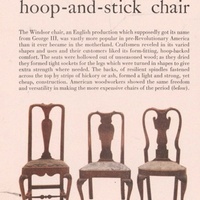
A magazine clipping focusing on revival furniture in Mrs. Fisher's scrapbook 2.
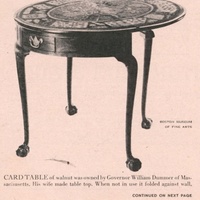
A magazine clipping focusing on revival style furniture in Mrs. Fisher's scrapbook 2.
The popularity of the hobby produced a new trade and enterprise, with the article boasting nearly “1500” antique shows growing from the former annual event, and a greater abundance of literature on the topic:
“Thirty years ago there was only one yearly antique show in the U.S; today there are over 1500. Thirty years ago there were half a dozen books on antiques; today there are over 500 that sell well” (“US Craze for Things Past,” Life Magazine, June 29, 1959, pp. 94).
What today we see merely as a hobby would evolve into a national ambition, weaving together the ties of tradition with the personal creativity.
Mrs. Fisher noted the interest and positioned her exhibit amongst the novel antique shows of the time! One article she clipped from the Dallas Post states that six of her miniatures would be featured at the Prince of Peace Antiques show. These crowds may have been her earliest audiences before what would become a traveling exhibit!
Image shows a newspaper clipping from the Dallas Post that reads, "Prince of Peace Antiques Show Will Feature Six Miniature Rooms."
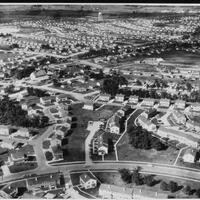
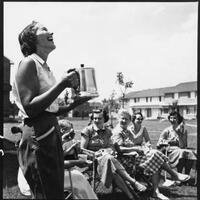
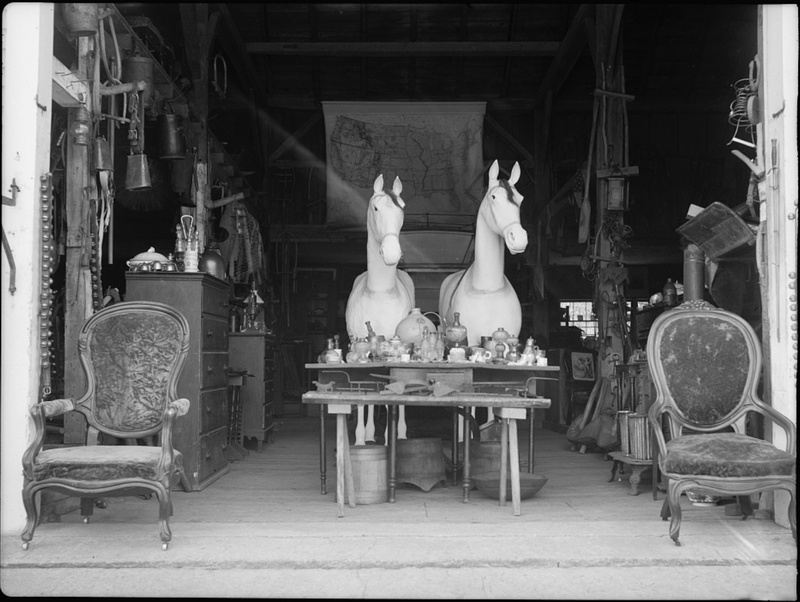
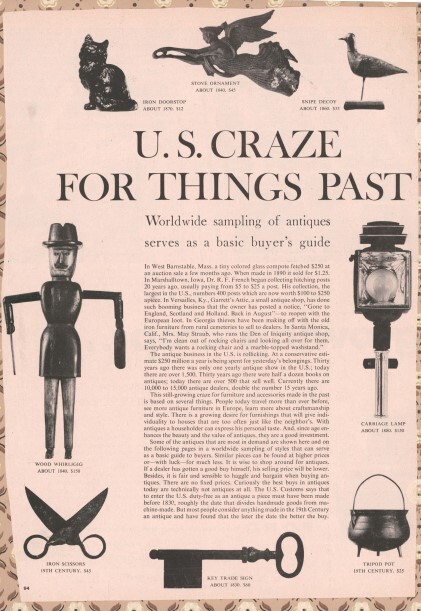
![<a href="/omeka/items/browse?advanced%5B0%5D%5Belement_id%5D=50&advanced%5B0%5D%5Btype%5D=is+exactly&advanced%5B0%5D%5Bterms%5D=A+Newspaper+Clipping+from+the+Dallas+Post%2C+entitled%2C+%22Prince+Of+Peace+Antiques+Show+Will+Feature+Six+Miniature+Rooms%2C%22+exhibiting+Mrs.+Fisher%27s+Dollhouse%2C+%5Bca.+1940s-1960s%5D">A Newspaper Clipping from the Dallas Post, entitled, "Prince Of Peace Antiques Show Will Feature Six Miniature Rooms," exhibiting Mrs. Fisher's Dollhouse, [ca. 1940s-1960s]</a> <a href="/omeka/items/browse?advanced%5B0%5D%5Belement_id%5D=50&advanced%5B0%5D%5Btype%5D=is+exactly&advanced%5B0%5D%5Bterms%5D=A+Newspaper+Clipping+from+the+Dallas+Post%2C+entitled%2C+%22Prince+Of+Peace+Antiques+Show+Will+Feature+Six+Miniature+Rooms%2C%22+exhibiting+Mrs.+Fisher%27s+Dollhouse%2C+%5Bca.+1940s-1960s%5D">A Newspaper Clipping from the Dallas Post, entitled, "Prince Of Peace Antiques Show Will Feature Six Miniature Rooms," exhibiting Mrs. Fisher's Dollhouse, [ca. 1940s-1960s]</a>](https://omeka.wilkes.edu/omeka/files/fullsize/a68043038c0499b01500da459e5d2d38.jpg)